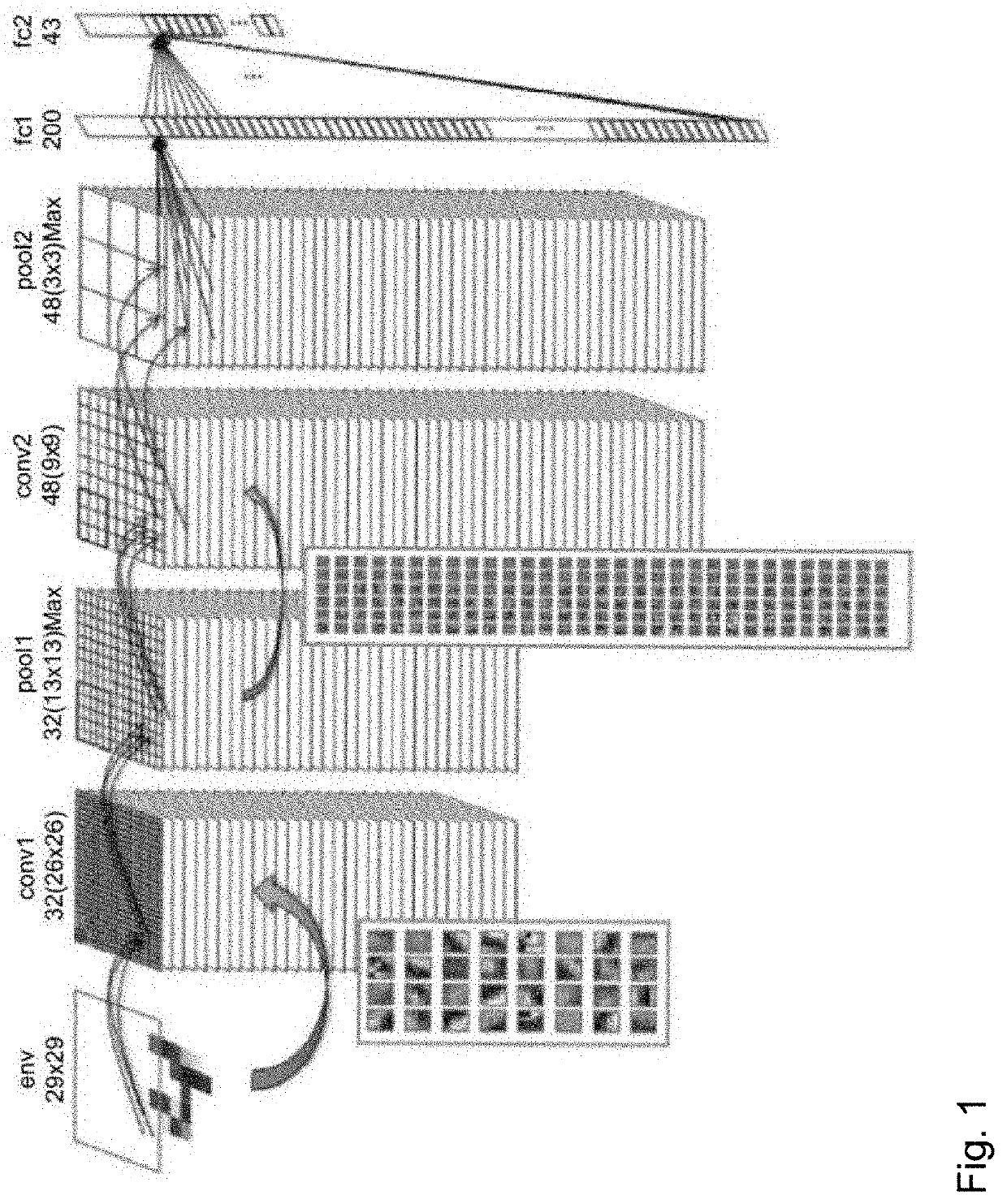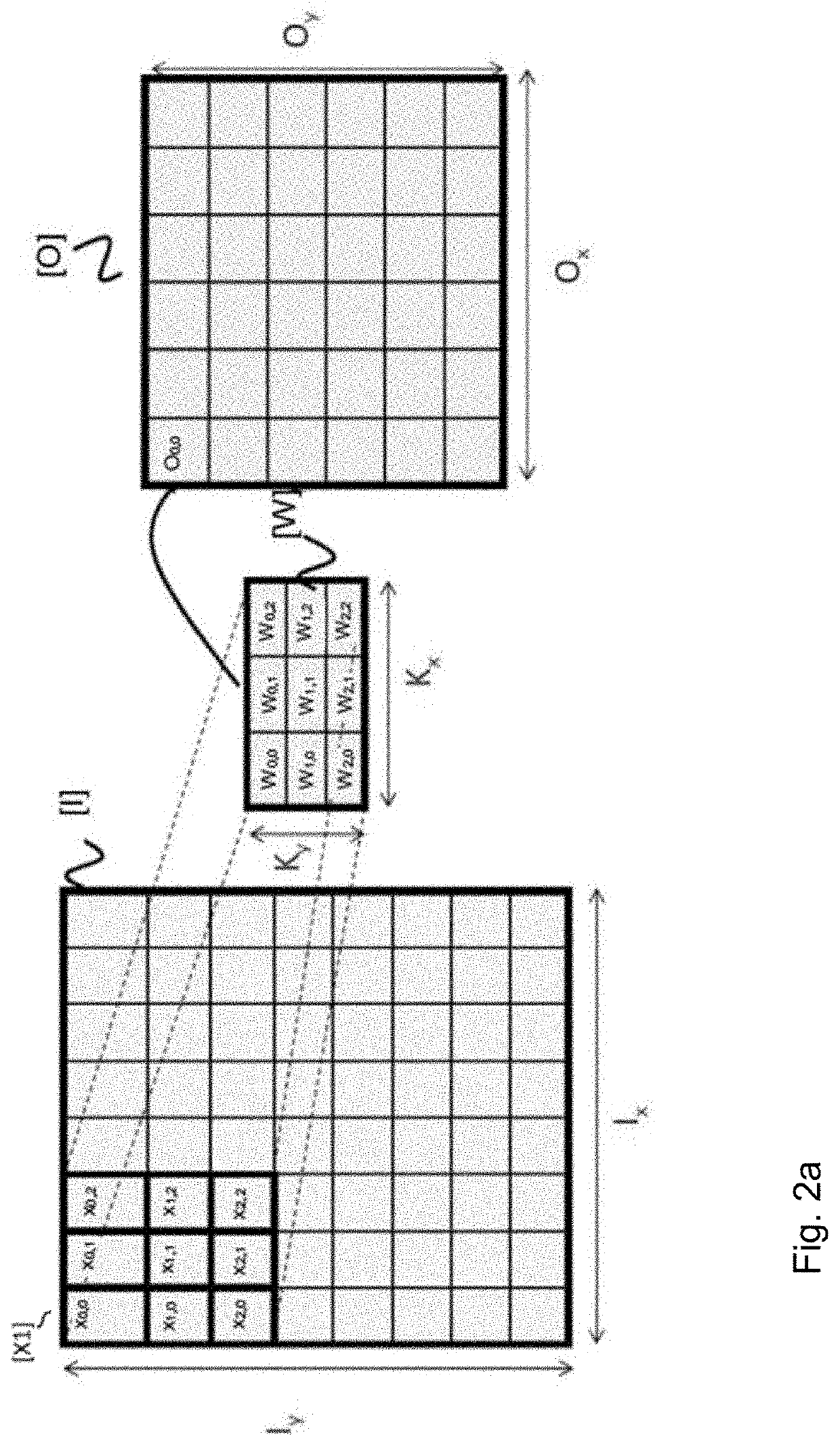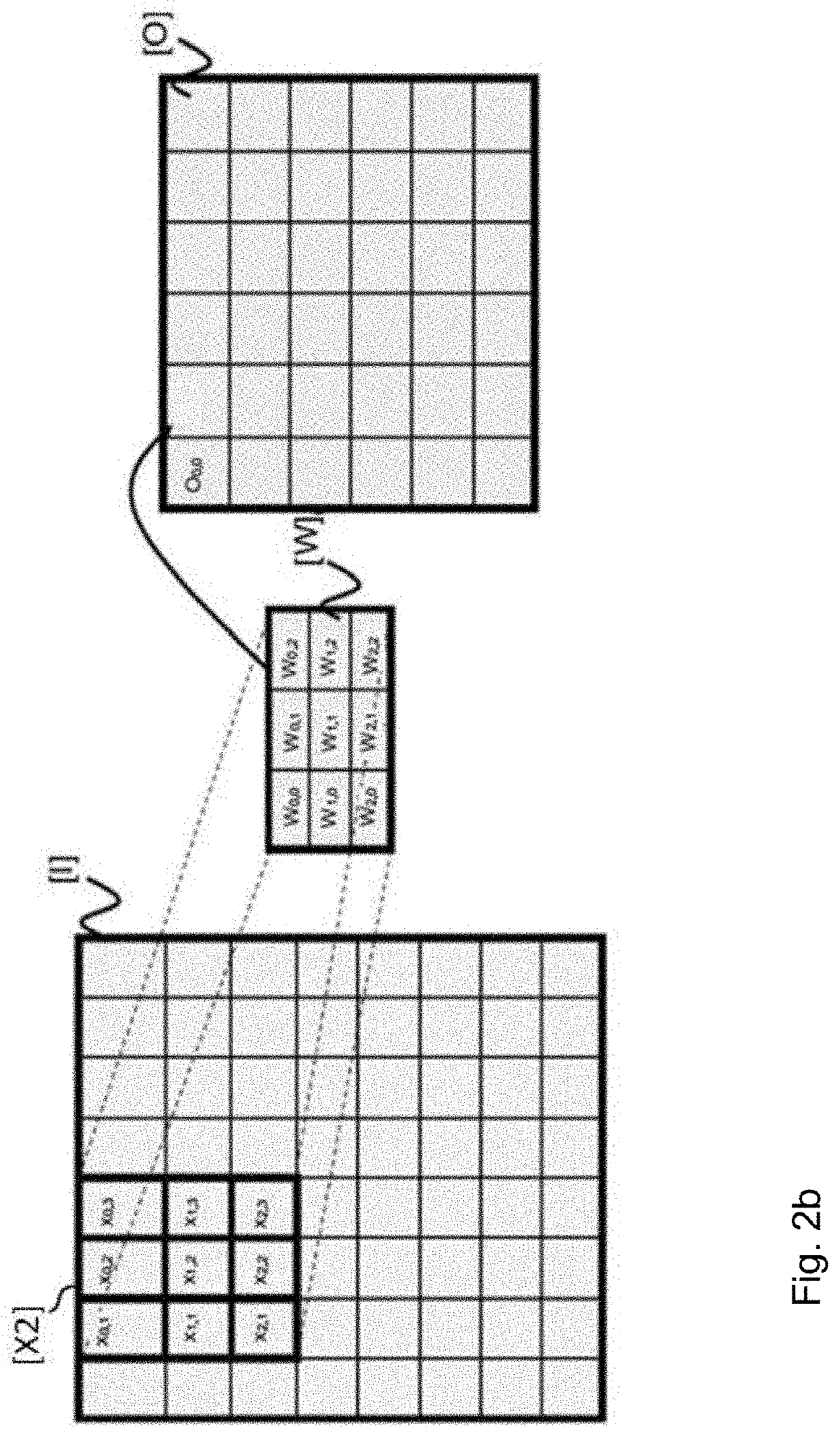Systolic computational architecture for implementing artificial neural networks processing a plurality of types of convolution
a computational architecture and neural network technology, applied in the field of neural network computation, can solve the problems of improving the power consumption of the neural network computer located on the mobile system, and achieve the effect of reducing the number of read and write accesses between the computing units, reducing the power consumption of the neural network implemented on the chip, and reducing the exchange of data
- Summary
- Abstract
- Description
- Claims
- Application Information
AI Technical Summary
Benefits of technology
Problems solved by technology
Method used
Image
Examples
first embodiment
[0092]FIG. 4 illustrates an example of a functional schematic of the computing network MAC_RES implemented in the system on chip SoC according to the invention, allowing a computation to be carried out with “row and column spatial parallelism”. The computing network MAC_RES comprises a plurality of groups of computing units denoted Gj of rank j=0 to M with M a positive integer, each group comprising a plurality of computing units denoted PEn of rank n=0 to N with N a positive integer.
[0093]Advantageously, the number of groups Gj of computing units is equal to the number of points in a convolution filter (which is equal to the number of convolution operations to be carried out; by way of example 9 for a 3×3 convolution, and 25 for a 5×5 convolution). This structure allows a spatial parallelism to be introduced whereby each group Gj of computing units carries out one convolution computation on one submatrix [X1] per one kernel [W] to obtain one output result Oi,j.
[0094]Advantageously,...
second embodiment
[0178]To carry out the 3×3s1 convolution computation with a row and column spatial parallelism the read-out of the data xij and the execution of the computations are organised in the following way:
[0179]The group G1 carries out all of the computations of the result O00, the group G2 carries out all of the computations of the result O01, and the group G3 carries out all of the computations of the result O02.
[0180]When the group G1 has completed the computation of the output neuron O00, it starts the computations of the weighted sum to obtain the coefficient O03 then O06 and so on. When the group G2 has completed the computation of the output neuron O01, it starts the computations of the weighted sum to obtain the coefficient O04 then O07 and so on. When the group G3 has completed the computation of the output neuron O02, it starts the computations of the weighted sum to obtain the coefficient O05 then O08 and so on. Thus, the first set, denoted E1, composed of the groups G1, G2 and ...
PUM
 Login to View More
Login to View More Abstract
Description
Claims
Application Information
 Login to View More
Login to View More - R&D
- Intellectual Property
- Life Sciences
- Materials
- Tech Scout
- Unparalleled Data Quality
- Higher Quality Content
- 60% Fewer Hallucinations
Browse by: Latest US Patents, China's latest patents, Technical Efficacy Thesaurus, Application Domain, Technology Topic, Popular Technical Reports.
© 2025 PatSnap. All rights reserved.Legal|Privacy policy|Modern Slavery Act Transparency Statement|Sitemap|About US| Contact US: help@patsnap.com



